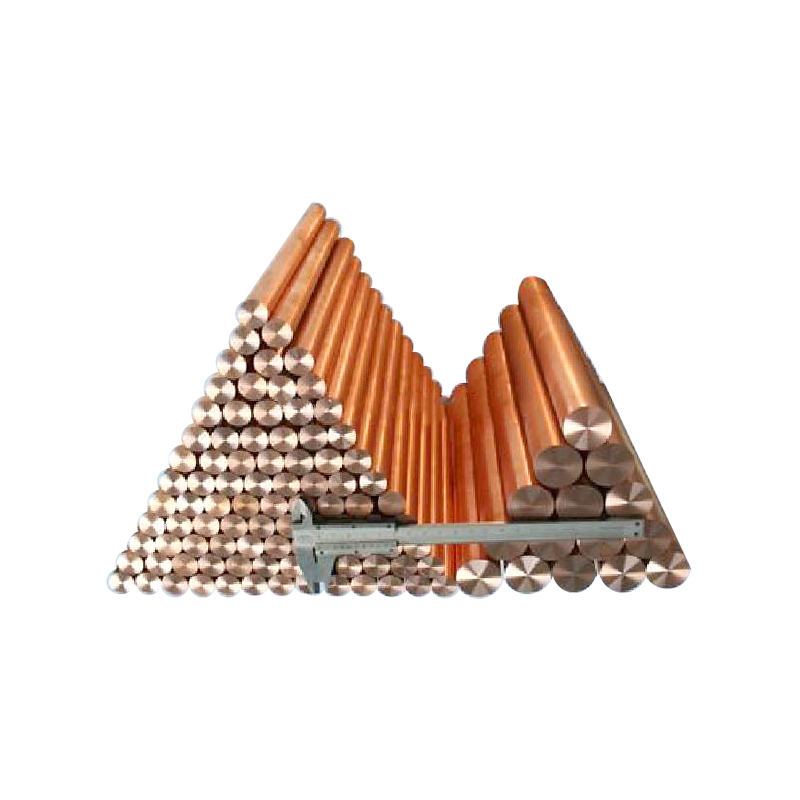Copper tungsten alloy also known as tungsten-copper alloy, is a composite material that combines the best properties of both copper and tungsten. This unique alloy is widely used in industries that demand materials capable of withstanding extreme conditions, such as high temperatures, heavy wear, and intense electrical and thermal loads. In this article, we will explore the composition, properties, and applications of copper tungsten alloy, highlighting why it is a preferred material in various high-performance engineering applications.
Copper tungsten alloy typically consists of a mixture of copper (Cu) and tungsten (W), with tungsten content ranging from 10% to 90%. The exact ratio of these two metals can be adjusted depending on the specific requirements of the application. The alloy is produced through a powder metallurgy process, where tungsten and copper powders are mixed, pressed into shape, and then sintered at high temperatures. This process results in a material that combines the high thermal and electrical conductivity of copper with the exceptional hardness and wear resistance of tungsten.

One of the most significant advantages of copper tungsten alloy is its excellent thermal and electrical conductivity. Copper, being one of the best conductors of heat and electricity, imparts these properties to the alloy. This makes copper tungsten alloy ideal for applications that require efficient heat dissipation and reliable electrical conductivity, even under extreme conditions.
Tungsten is known for its hardness and high melting point, which contribute to the wear resistance of the alloy. Copper tungsten alloy can withstand abrasive conditions and maintain its integrity even when subjected to high levels of mechanical stress. This durability is crucial in applications where the material is exposed to friction, impact, and other forms of wear.
The high melting point of tungsten allows copper tungsten alloy to retain its structural stability at elevated temperatures. This makes it suitable for use in environments where other materials might degrade or lose their effectiveness. The alloy’s ability to maintain its properties under extreme heat is particularly valuable in electrical contacts, heat sinks, and other high-temperature applications.
Despite its high hardness, copper tungsten alloy is relatively easy to machine. This property is important for the production of components with complex shapes and precise dimensions. The alloy can be drilled, milled, and turned using standard machining techniques, making it versatile for manufacturing a wide range of products.
One of the primary applications of copper tungsten alloy is in the production of electrical contacts and electrodes. The alloy’s high conductivity and resistance to wear make it ideal for use in switches, circuit breakers, and other electrical devices that operate under high current loads. In these applications, copper tungsten alloy ensures reliable performance and a long service life.
Copper tungsten alloy is also widely used in thermal management applications, particularly as heat sinks in electronic devices. The alloy’s ability to efficiently conduct and dissipate heat makes it essential in preventing overheating and ensuring the longevity of electronic components. It is commonly used in semiconductor devices, power electronics, and other systems where heat management is critical.
In the aerospace and defense industries, copper tungsten alloy is used in the manufacture of components that must withstand extreme temperatures and mechanical stress. This includes rocket nozzle liners, missile components, and other critical parts that require materials with high thermal stability and wear resistance. The alloy’s unique combination of properties makes it suitable for use in harsh environments encountered in aerospace and military applications.
Copper tungsten alloy is also a popular choice for electrical discharge machining (EDM) electrodes. EDM is a manufacturing process used to machine hard metals and alloys that are difficult to work with using traditional methods. The high conductivity and wear resistance of copper tungsten alloy make it ideal for this purpose, allowing for precise and efficient machining of complex parts.
Copper tungsten alloy is a versatile and high-performance material that finds use in a wide range of demanding applications. Its unique combination of thermal and electrical conductivity, wear resistance, and high-temperature stability makes it an essential material in industries such as electronics, aerospace, defense, and manufacturing. As technology continues to advance, the importance of copper tungsten alloy in meeting the challenges of extreme conditions is likely to grow, solidifying its role as a key material in modern engineering.












